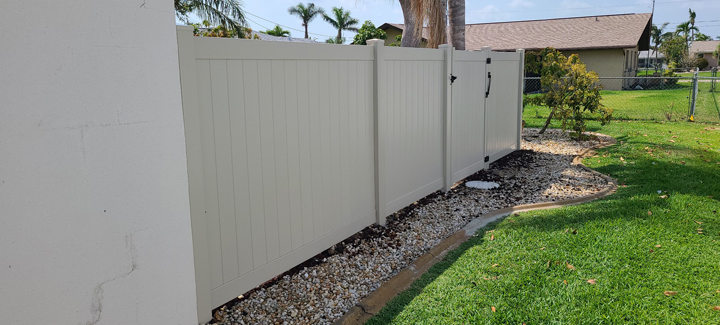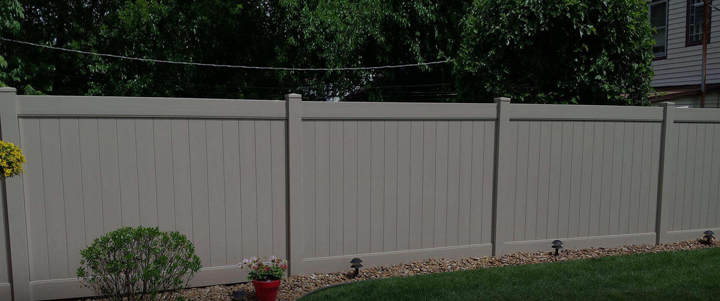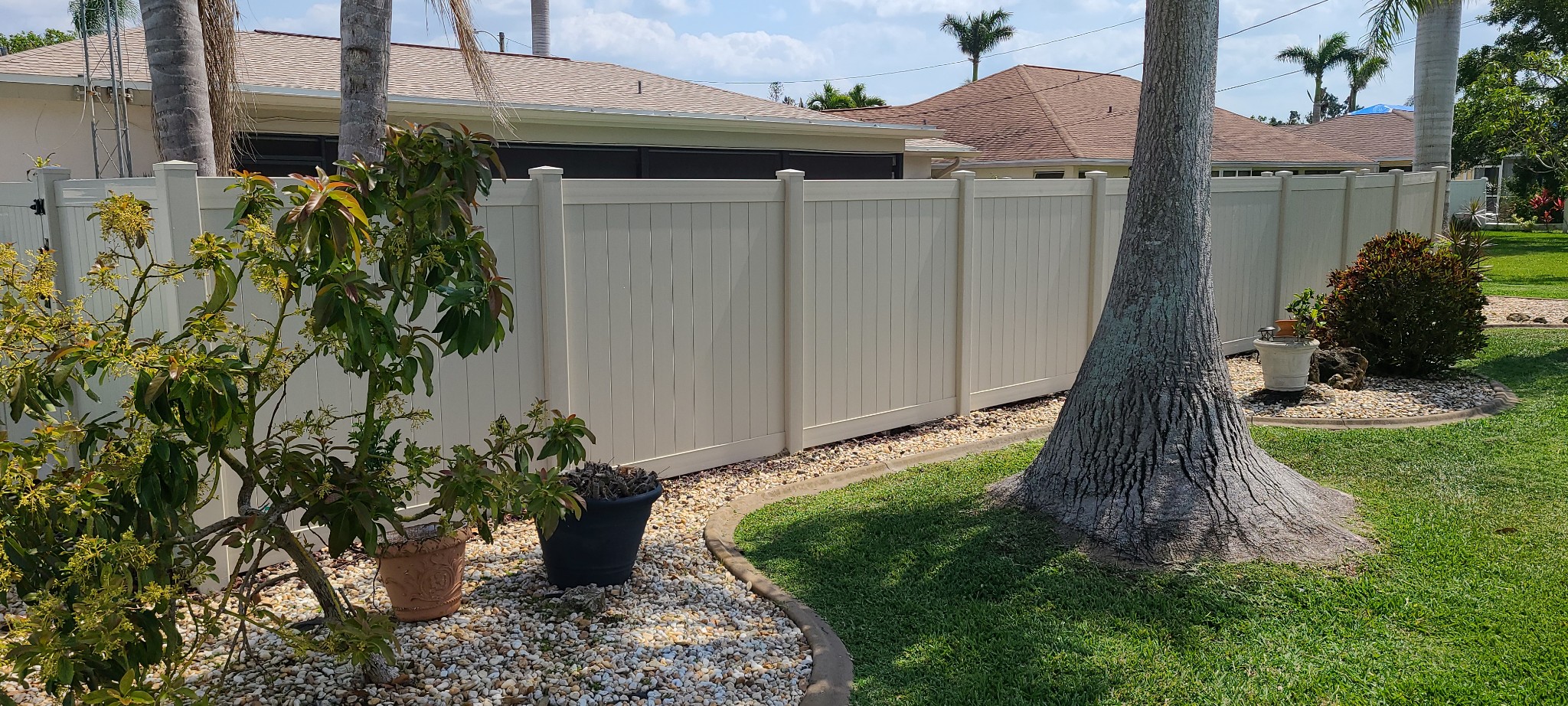Imagine, you wake up one morning and find that your neighbor has erected a massive…

Who Gets The Good Side Of The Fence? The Surprising Answer!
Ever find yourself stuck in a heated debate with your neighbor about who should get the ‘good side’ of the fence? You might be shocked to learn that the rules are not set by personal whims or neighborhood politics. Buckle up as we’re about to unravel the surprising legal and ethical aspects surrounding this residential enigma, adding a twist to what you’ve always believed. Ready to discover the unexpected? Read on and become a master of fence-side etiquette!
According to building codes, the finished or good side of the fence should face the outside of the property, visible to neighbors and the outside world. This means that it is generally considered a shared responsibility between neighboring properties to ensure that each side of the fence is aesthetically pleasing. In some cases, neighbors may come to an agreement to split the cost of fence maintenance or construction.
Deciphering the “Good Side” of the Fence
The question of which side of a fence is the good side has been a longstanding debate among homeowners. While some may argue that it is purely subjective, there are certain factors that can be considered to determine which side is better.
One common perception is that the good side is the one that faces outward or towards the public space, such as the street or sidewalk. This is because the fence serves as a representation of your property and adds to your home’s curb appeal. In this case, the smooth and finished side of the fence should face outward.
However, others may argue that it is more practical to have the good side facing inward toward their own property. This provides privacy from prying neighbors and reduces noise pollution. Furthermore, it can also serve as an added layer of protection against burglars.
For instance, consider a neighbor who lives in close proximity to a busy street or commercial area. Having a fence with its good side facing outward means dealing with excessive noise levels, dust, and air pollution. On the other hand, if it faced inward, they would have more privacy and feel safe in their own backyard.
Regardless of where you stand on this debate, it is essential to consider building regulations before making any decisions regarding your fence’s placement.
Visual Preferences and HOA Requirements
Many homeowners associations (HOAs) enforce strict guidelines for fences installed on private properties visible from public areas such as streets and sidewalks. Their rules often specify which materials can be used, fencing style and design allowed per architectural guidelines within their jurisdiction also dictate fencing regulations concerning fences with visibility from public thoroughfares.
For example, some communities may require specific colors or finishes for the exterior side of the fence to ensure uniformity with other homes within the neighborhood. With this in mind, opt for traditional fencing styles such as the split rail or picket fences that look the same from both sides. This way, you will avoid any costly maintenance and keep both you and your neighbor satisfied.
Think of it this way: A fence that matches with and blends in well with the surrounding areas can add to your home’s curb appeal, and the community aesthetic. It’s like having a beautifully decorated Christmas tree that lights up the entire street!
Alternatively, if you’re wondering how to get around HOA requirements for fencing on your property, be sure to thoroughly read their guidelines and regulations before beginning any installation. They typically contain essential information about what is allowed and any need for HOA permission before beginning any renovation or construction work.
Security Concerns and Building Regulations
When building a fence, many homeowners prioritize aesthetics over functionality. However, it should be noted that aside from enhancing the appearance of your property, a good fence must also provide security for you and your family.
Aside from aesthetic appeal, fences can serve a variety of purposes. They keep pets within your property and prevent trespassing by unauthorized persons. Fences can also act as a barrier for hazardous or dangerous substances stored in your yard. Therefore, it is crucial to understand the building codes that govern the erection of fences.
From a security perspective, building codes require fences to have the finished or “good” side facing outward from the residential or commercial property where it is erected. The smooth side should face the street and neighboring properties.
One reason behind this requirement is security concerns. When faced with intrusion attempts, the finished side offers better protection due to its sturdiness and resistance against the force exerted on it.
Furthermore, having a well-framed fence can improve curb appeal and increase property value, in addition to providing an additional layer of defense.
Chain-link fences, with their diamond-shape configurations, are affordable options for securing borders. However, installing them with the fabric facing outward will make it easier for intruders to gain access, as they could use these diamonds as footholds.
In contrast, professional-grade chain-link fencing with top brackets is better than fabric-outward installations. Not only is it much harder to climb on them, but they offer greater stability and strength compared to DIY alternatives.
The importance of code compliance cannot be overstated in this case. Every locality has its own set of regulatory requirements governing fence installations, with some requiring permits before erection, even if no zoning laws apply. It is advisable to check with local authorities before embarking on any home improvement project.
- According to a survey conducted by Sierra Fence, Inc., 68% of respondents believed that the owner installing the fence should have the ‘good’ side facing their property.
- In contrast, a 2020 YouGov poll found that only 31% of people thought they had a right to the ‘good’ side of the fence on their property.
- A 2022 Pew Research Center study revealed that approximately half of American homeowners sharing a boundary fence believe that both neighbors should equally enjoy the ‘good’ side, promoting symmetrical fence designs.

Legalities of Fence Placement and Maintenance
Fence placement and maintenance issues can be a source of conflict between neighbors. Misunderstandings about boundary lines can lead to disputes, especially in cases where one neighbor wants an upgrade. Understanding the legal aspects of fence placement and maintenance is crucial for property owners.
Constructing a fence involves adhering to different sets of rules. Although compliance with building codes and zoning laws may appear burdensome, it is essential to realize that these regulations protect both homeowners’ rights and the community’s interests.
As an analogy, just like how traffic lights exist to keep drivers safe on the road, regulatory requirements ensure that fences are installed safely and lawfully without obstructing neighboring properties.
Furthermore, retaining a well-maintained fence is equally vital. Failing to meet certain stipulations could result in fines or court judgments against homeowners. Thus, maintaining a good relationship with your neighbors can be beneficial when working out any potential fencing problems.
Some forms of decorative fence designs may require maintenance guidelines. For instance, wood panel fences need regular maintenance to prevent rot or insect infestations. Similarly, metal fences could rust over time if not coated or painted regularly.
It is essential to establish property lines before constructing a fence where both parties can agree on who owns which property boundaries. This will help avoid potentially costly mistakes during construction.
On another note, sometimes homeowners may be inconvenienced by their neighbor’s fences. If this happens, try speaking with your neighbor first to resolve the issue amicably before escalating it to local authorities. Some problems can be resolved by simple acts such as providing easements or agreeing on sharing maintenance expenses.
Fence placement and maintenance can cause conflicts between neighbors, making it crucial to understand the legal aspects of fence building, compliance with regulations, and good maintenance practices. Establishing property lines before constructing a fence is vital to avoid disputes arising from misunderstandings. It is also essential to maintain a good relationship with neighbors as it may be beneficial when addressing any potential fencing problems. Some decorative fence designs require specific maintenance guidelines, and resolving inconvenience caused by neighbor’s fences may involve simple acts such as providing easements or agreeing on sharing maintenance expenses.
Boundary Line and Property Division
One of the most critical elements to consider when building a fence is understanding where your property line starts and ends. Suppose you install a fence that crosses over into your neighbor’s property, even by just inches. In that case, they have every right to request you take it down or move it back onto your own property.
To prevent lengthy disputes with neighbors, it’s recommended to schedule a survey before installing your fence. A survey will explicitly mark out the boundary lines, ensuring that each party understands where the line falls.
It’s also worth noting that sharing a property line does not necessarily mean both parties adding their fences can split costs. While this is often an arrangement neighbors come to, it’s not compulsory if one party doesn’t wish to contribute financially towards the project.
Similarly, suppose you are planning on altering or upgrading an existing boundary-line fence shared with your neighbor. In that case, you should inform them ahead of time in writing about what you plan to do clearly. By doing so, your neighbor has the opportunity to give you input and suggestions concerning your plans instead of complaining about a surprise change later.
Additionally, suppose there is a disagreement with the placement of a new fence because of any confusion over boundary lines. In that case, local county authorities may need to intervene. But it’s essential to be aware of the steps and cost involved should you need to go down this road.
Neighborly Fence Etiquette and Solutions
Installing a new fence comes with various expectations and unspoken rules for proper etiquette between neighbors. According to experts in the field, discussing fencing plans with adjacent property owners first and getting their consent can save significant future disagreements.
However, keep in mind that while requesting approval from neighbors could reduce conflict when installing a fence, it doesn’t guarantee financial support – which could end up being just as disputable.
An issue that often arises between neighbors regarding fence installation is the good side of the fence. Generally speaking, the smooth and more attractive side of a fence should face outwards towards the street or neighboring properties. However, there’s no right or wrong side when it comes down to personal preference.
While some fences may be viewed at equal quality from either side, others may have one good and one bad-side view. That said, good quality fences should look equally impressive from both directions, regardless of which side people prefer.
When starting fence construction, remember that you are building relationships with your neighbors as well. Suppose you plan on installing a fence on a property line without getting feedback from your neighbor. In that case, you may be putting yourself in jeopardy.
On the flip side of this coin, appeasing every neighbor’s preferences could put you off-guard regarding security measures surrounding your property. According to various county regulations and the type of fence installed, sometimes it’s necessary to face the less attractive or smooth-sided part of the fence towards outwards-facing areas.
A possible solution might be finding a compromise between aesthetics and safety requirements for peace-of-mind for all parties involved. Again, always conduct surveys confirming property lines shared with neighbors beforehand to avoid disputes.
Remember that following local codes and regulations is crucial when planning any fencing project. If done incorrectly or inappropriately, it could cause significant legal woes down the road.

Legal Recourse for Fence Disputes
Fence disputes between neighbors are unfortunately not uncommon. While it’s always best to resolve these issues amicably, sometimes legal intervention is necessary. Here are some options for legal recourse in fence disputes:
Small Claims Court
Small claims court is a popular option for resolving fence disputes. You can sue your neighbor for the cost of repairing or replacing a damaged fence, or for any reduction in your property value resulting from an undesirable fence. Small claims court handles cases up to a certain monetary amount, which varies by state.
Mediation
Mediation is another option for resolving fence disputes without going to court. A third-party mediator will assist the two parties in finding a mutually-agreeable solution. This may involve repairing or replacing the fence, sharing costs between neighbors, or installing a new fence altogether.
Arbitration
Arbitration is similar to mediation but with one key difference: the arbitrator’s decision is binding. This means that both parties must agree beforehand to accept the arbitrator’s decision as final and binding. This isn’t always a popular choice, especially if you’re not confident about the outcome.
The Importance of Documentation
Regardless of which legal recourse you choose, documentation is key. Take photos of the fence in question, including its location and condition. Keep copies of any correspondence between you and your neighbor related to the dispute. Collect estimates and receipts for any repairs or replacements you’ve made. The more evidence you have on your side, the stronger your case will be.
Local Ordinances
Check with your local city or county ordinances regarding fencing regulations and requirements before engaging in any legal action against a neighbor. In many instances, there may already be answers provided by these ordinances that make mediation happen before jumping into short-term solutions.
Fence disputes can be stressful and frustrating, but resolving them doesn’t have to involve a legal battle. Work with your neighbor to find a solution that works for both parties. If this isn’t possible, consider legal intervention as a last resort option. Remember to document everything, keep local ordinances in mind, and build your case carefully so that you can achieve the best outcome.



